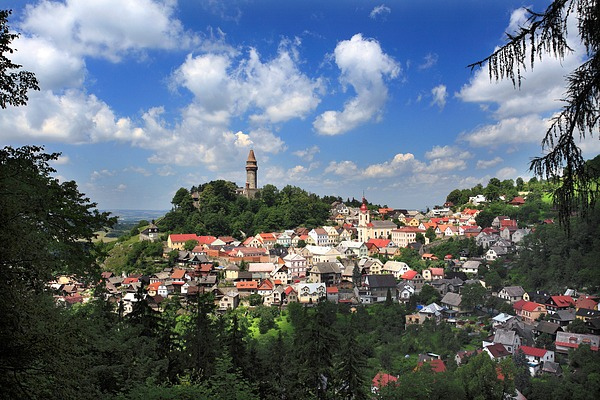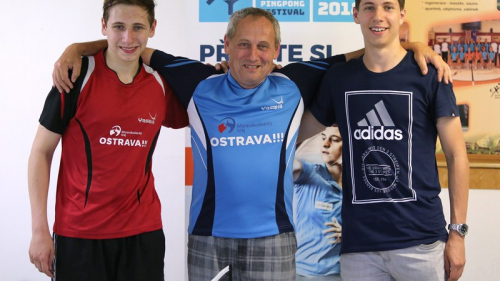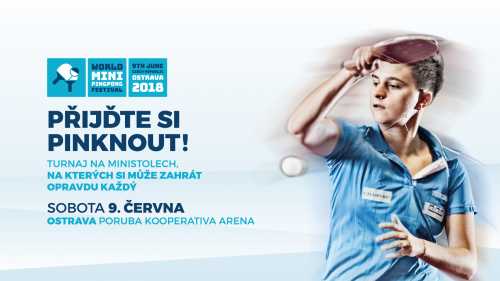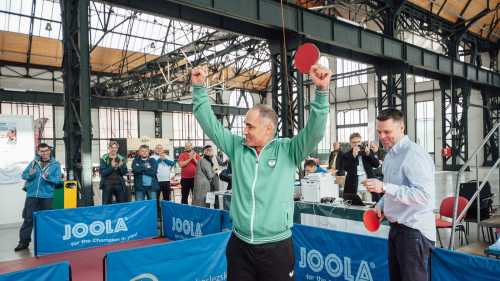Moravian-Silesian Region
The Moravian-Silesian Region is full of contrasts. Originally named the Ostrava Region, it was established as one of the fourteen independent administrative regions of the Czech Republic on January 1st, 2000. The region consists of six former districts (Bruntál, Opava, Nový Jičín, Ostrava-City, Karviná and Frýdek-Místek) and 22 municipal districts with an extended competence. This region has 5 statutory cities, 35 towns, 3 townships and 300 villages. It spreads on the total area of 5,427 km2 (2,095.31 sq. mi). The population of the region is 1.25 million people.

Top places in the Moravian-Silesian Region
Praděd
The majestic peak of Praděd (1,492 m) is the highest mountain in Moravia and the fifth highest peak of the Czech Republic. In 1970-1980 a 145-metre telecommunication tower was built here as a premier observation place. If weather permits, it is possible to see also the other dominants of the region from the 73 meters high public lookout – Lysá Hora and Radhošť. The top of the tower is the highest stable (however artificial) point of the Czech Republic; with the height of 1637 m, it is higher than the peak of the Sněžka Mountain, the highest Czech mountain. www.jeseniky-praded.cz
Lysá Hora
Lysá Hora Mountain (1,323 m) offers one of the most beautiful views in the Czech Republic. It is the highest mountain of the Moravian-Silesian Beskydy the Těšín Beskydy mountain ranges. There is a meteorological station and a 78 m high telecommunication tower on the top of Lysá Hora. They join in a star-shaped pattern into the highest peak called Gigula. In the Lysá Hora Mountain area, plenty of the natural reservations and monuments have been created: Mazák and Mazácký Grúnik, Malenovice couldron, Satiny waterfalls, Ostravice river bed, Ondráš holes etc. However, only the view opposite Smrk Mountain (Spruce Fir Mountain) or Ondřejník across the dizzily deep valley of the Ostravice River provides an unforgettable experience. www.lysahora.cz
Pustevny
The famous ski area – saddle in the Moravian-Silesian Beskydy Mountains near Radhošť (1,018 meters above sea level) belongs to the village called Prostřední Bečva. It was named after the hermits who lived there from 1874. Wooden buildings built up in the folk style in the end of the 19th Century based on the design of Dušan Jurkovič are typical for Poustevny. The most famous buildings are Libušín and Maměnka, wooden log Art Nouveau style buildings with rich ornamental decorations typical for the Slavic folk architecture, and the hundred-year-old wooden bell tower. www.pustevny.cz
Radhošť
A fabulous mountain (1,129 m) in Beskydy, the place often connected with the worship of the pagan god Radegast – a god of fertility, hospitality, crops and richness. According to the legends, this god of god of war, sun and victory lived in the mountain. In 1931, Radhošť installed the sculptures and art of Albín Polášek – including the Radegast statue. There are a couple of interesting sites on the peak as a pilgrimage chapel of Cyril and Metodej from 1898 with the copy of the Valasska Madona painting by A. Liebscher and the crucifix with Cyril and Method statuary by A. Polasek from 1931. There is a bronze memorial plaque in the chapel reminding of the visit of President T. G. Masaryk on 23 June 1928. http://www.pustevny.cz/o-pustevnach/radhost/
Štramberk
The mountain town of Štramberk was founded on slopes of Chateau Hill in the second half of the 14th century. At present, thanks to its picturesque scenery and unique complex of town folk architecture, it is called “Moravian Bethlehem“. The ruin of Štramberk (Strallenberg) Castle with a cylindrical tower called “Trúba” dominates the town as well as broad environs. Timbered houses, which were built by Wallachian handicraft workers in the 18th and 19th centuries, are a unique architectural collection of the folk urbanism which creates the city conservation area.
Štramberk is famous for its sweet-smelling confectionery product – gingerbread „Štramberské uši” or “Štramberk Ears” thanks to its shape, which have been produced here for many long centuries as a reminder of the legendary victory of the Christians of Štramberk against Mongolian army on 8 May 1241. www.stramberk.cz
Kopřivnice Museum
The unique Technical Museum in Kopřivnice covers nearly a hundred-and-fifty-year-old history of the Tatra car factory since the time when the first car called Präsident was manufactured in Austria-Hungary in 1897. Over sixty passenger, sport and freight vehicles of the Tatra brand, car frames, engines, a sport aircraft and other interesting objects are the biggest attraction for many visitors to the town. The Hall of Fame is devoted to Emil Zátopek, a native of Kopřivnice and his wife Dana, the famous Olympic champions. http://www.tatramuseum.cz/
Chateaux Hradec nad Moravicí
The charming little town of Hradec nad Moravicí, which is dominated by a chateau of the same name composed of two sections, is located in the Opava region. Since 2001, it is listed as the National Cultural Heritage site with the only preserved unique furniture in Moravian-Silesian region. The dominant White Chateaux has beautifully furnished rooms, while the Red Chateau, built in the Gothic style, has a restaurant and a concert hall. Don’t overlook the 19th-century White Tower with the 136 hectars of the English park. Since 1961 a music competition of young pianists and violinists called Beethoven´s Hradec takes place there in honour of the famous composer. www.zamek-hradec.cz
Karlova Studánka Spa
Karlova Studánka is the highest located village in the Bruntál Region (800m above sea level). The priority of the local activities is the spa industry and tourism, which was also present since the 200 years of history of the village. Thanks to its climate and location in the middle of the beautiful Jeseníky nature, it belongs among the most interesting spa resorts in Czech Republic. It is situated on the eastern side of Praděd Mountain in the valley of the Bílá Opava River, and despite its high altitude, the spa has a relatively moderate climate typical for foothills. At present, it is definitely one of the places with the cleanest air in the Czech Republic. The natural healing resources include legendary mineral water. www.horskelazne.cz
Open air museum, Rožnov pod Radhoštěm
Open Air Museum is located in Rožnov pod Radhoštěm as the second oldest museum in central Europe. It was founded by brothers Alois and Bohumír Jaroněk in 1925. Throughout the year, number of events inspired by folklore, folk customs and traditional crafts take place in the museum. An annual ethnographic festival takes place during summer. www.vmp.cz
Hukvaldy
The village named Hukvaldy with nearly two thousand inhabitants is known for its castle Hukvaldy – one of the largest castles in Moravia. It was founded by Arnold of Hückeswagen in the first half of the 13th century. Famous Czech composer Leos Janacek (1854-1928) was born on 3 July 1854 in the building of the local school as the ninth of thirteen children. http://www.hukvaldy.eu/



